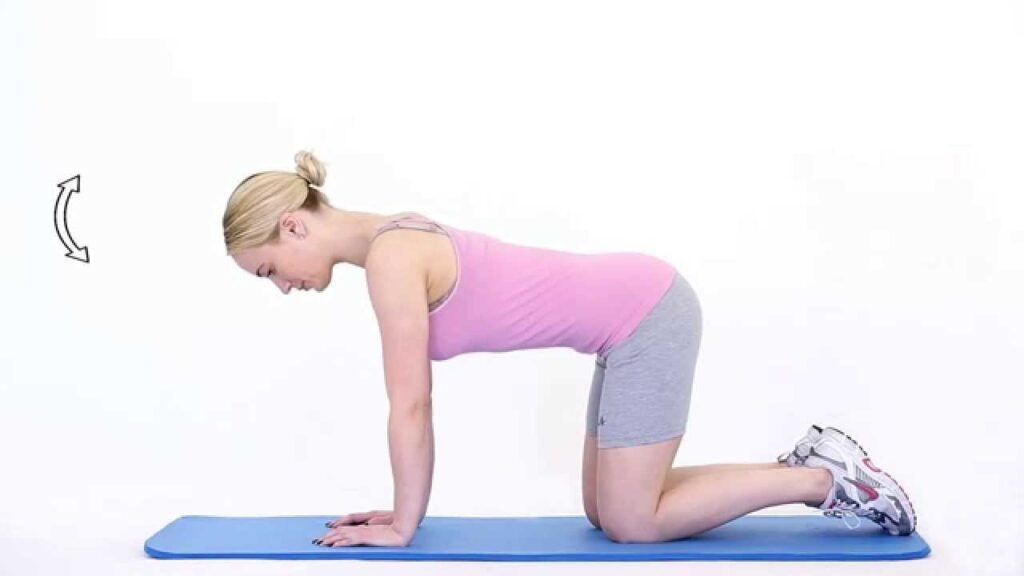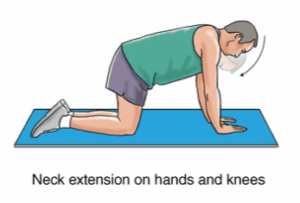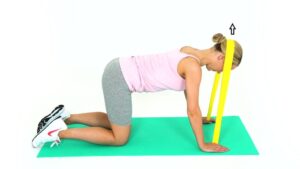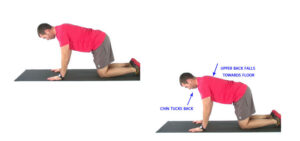

Maintaining good posture is key to overall health and comfort. However, many people experience poor neck posture due to prolonged sitting, smartphone use, and other daily habits.
One of the most effective ways to correct poor posture is by strengthening the neck extensor muscles. These muscles help keep the head aligned with the spine, reducing strain and improving posture.
In this article, BestForwardHeadPostureFix shall discuss how and why you should focus on strengthening the neck extensor muscles.
You would also learn practical exercises, tips for incorporating them into your routine, and how improved strength can enhance posture and reduce discomfort.
In This Article
- Understanding Neck Extensor Muscles
- The Impact of Weak Neck Extensors on Posture
- Benefits of Strengthening Neck Extensor Muscles
- Effective Exercises to Strengthen Neck Extensors
- Incorporating Neck Extensor Exercises into Your Routine
- Precautions and Tips for Safe Practice
- FAQs on Neck Extensor Muscles and Posture
- Conclusion
Understanding Neck Extensor Muscles
The neck extensor muscles play a crucial role in keeping your head upright and ensuring proper spinal alignment.
These muscles include the semispinalis cervicis, splenius capitis, and multifidus, all of which work together to stabilize the neck and support its natural curve.
When these muscles are weak, the head gradually shifts forward, resulting in a condition commonly known as forward head posture.
This posture places unnecessary stress on the cervical spine, leading to muscle strain, joint discomfort, and potential nerve compression.
For instance, if you have ever noticed your head creeping forward while working on a laptop or staring at your phone, that is likely your neck extensor muscles losing the battle against gravity.
Over time, this imbalance can result in chronic neck pain, stiffness, and limited mobility.
According to a study published in The Journal of Orthopaedic Research, poor activation of the deep cervical extensor muscles is a key factor in chronic neck pain and functional limitations.
The good news is that strengthening these muscles through targeted exercises can significantly reduce discomfort, restore balance, and improve posture.
Movements like chin tucks, prone cobra, and quadruped head lifts are excellent for reactivating and building endurance in these essential muscles.
Consistent practice can protect you from long-term complications and help you stand tall with confidence.
The Impact of Weak Neck Extensors on Posture
Weak neck extensor muscles are often associated with forward head posture, a common postural issue where the head protrudes in front of the body’s centerline.
Imagine looking at someone from the side and noticing that their ears are not aligned with their shoulders—that is forward head posture.
This misalignment increases the strain on the cervical spine, leading to pain, stiffness, and even tension headaches. Over time, it can also contribute to muscle imbalances, tightness in the upper back, and restricted movement.
For example, if you spend hours working on a computer or scrolling on your phone with your head tilted forward, you are likely placing continuous stress on your neck extensors.
These muscles become fatigued and weak, leaving your spine without the support it needs. This can result in symptoms like chronic headaches and upper back discomfort.
According to a paper in Physiotherapy Journal, individuals with chronic neck pain often exhibit poor endurance and strength in their neck extensor muscles.
The study emphasizes that targeted strengthening exercises, such as chin tucks and prone cobra movements, can help reverse these symptoms by improving muscle activation and restoring balance in the cervical spine.
Consistent training not only reduces pain but also promotes better posture and overall spinal health, helping you move with greater comfort and confidence.
Benefits of Strengthening Neck Extensor Muscles
Strong neck extensor muscles offer numerous benefits that go beyond just improving posture. These muscles play a vital role in maintaining spinal alignment, reducing discomfort, and enhancing overall well-being.
Whether you are an athlete, office worker, or simply someone who experiences occasional neck tension, strengthening your neck extensors can make a noticeable difference in your daily life.
Correcting Forward Head Posture
One of the primary advantages of strong neck extensor muscles is their ability to correct forward head posture.
When these muscles are strong and engaged, they help realign the head over the shoulders, reducing unnecessary strain on the cervical spine.
This improves overall posture and minimizes the risk of chronic neck issues.
Reducing Neck Pain
Research published in The Clinical Journal of Pain highlights how targeted exercises that strengthen the neck extensors can significantly alleviate chronic neck pain.
Stronger muscles improve endurance and stability in the cervical region, reducing the pressure on surrounding tissues and joints, which can be a common source of discomfort.
Enhancing Balance and Stability
Your neck plays a key role in balance. Strong neck extensor muscles contribute to better head control, which is essential for maintaining balance and preventing falls, especially in older adults.
Improved stability can also enhance athletic performance and reduce the risk of injury.
Improving Functional Movements
Everyday movements—such as turning your head to check traffic, looking up at a screen, or carrying heavy objects—become more comfortable and pain-free with stronger neck muscles.
This improved functionality translates into greater ease of movement and enhanced quality of life.
Effective Exercises to Strengthen Neck Extensors
Incorporating targeted exercises into your fitness routine is one of the most effective ways to strengthen your neck extensor muscles and improve overall posture.
When performed consistently, these exercises can help prevent neck pain, correct forward head posture, and build endurance in the muscles that support your head and upper spine.
Below are some simple but highly effective exercises to add to your routine.
- Chin Tucks
Chin tucks are a foundational exercise for neck health and posture correction. This exercise strengthens the deep cervical flexors, promotes proper head alignment, and helps reduce the strain caused by forward head posture. Regular practice can restore a natural cervical curve and improve muscle activation.
How to do it:
- Sit or stand upright with your shoulders relaxed and your back straight.
- Gently tuck your chin toward your neck, creating a “double chin” without tilting your head down.
- Hold the position for 5 seconds, then release.
- Repeat this movement 10 times, ensuring you move slowly and with control.
Pro Tip: Avoid jutting your head forward or straining your neck muscles. Keep the movement subtle and controlled.
- Prone Cobra
The prone cobra is an excellent exercise for strengthening the neck extensors and upper back muscles. It also improves scapular stability, which plays a significant role in maintaining good posture.
How to do it:
- Lie face down on a mat with your arms at your sides, palms facing down.
- Lift your chest and head slightly off the floor while squeezing your shoulder blades together.
- Keep your neck in a neutral position; avoid hyperextending it.
- Hold the position for 5–10 seconds and then lower back down.
- Repeat 8–10 times.
Pro Tip: Focus on engaging your upper back muscles rather than pushing your neck too far back.
- Quadruped Head Lifts
Quadruped head lifts are a great exercise for improving neck strength and alignment. This movement helps retrain your neck extensors to work in coordination with the rest of your spine.
How to do it:
- Get on all fours with your hands directly under your shoulders and knees under your hips.
- Keep your spine in a neutral position and your head aligned with your back.
- Slowly lift your head upward, focusing on using your neck extensor muscles.
- Lower your head back to the starting position.
- Repeat 10 times.
Pro Tip: Avoid sagging your back or dropping your head too far. Maintain a controlled, smooth movement throughout the exercise.
As noted in The International Journal of Sports Medicine, consistent performance of these exercises can improve neck strength, endurance, and posture.
By incorporating these movements into your weekly routine, you’ll develop stronger neck muscles, reduce discomfort, and improve your overall alignment and mobility.
Incorporating Neck Extensor Exercises into Your Routine
Incorporating neck extensor exercises into your daily routine doesn’t have to take a lot of time or effort, but consistency is key.
Building these exercises into your weekly schedule can help you strengthen your neck, correct posture, and prevent future discomfort.
Here are some practical tips to help you get started:
- Set a Schedule: Plan to perform these exercises at least 3–4 times a week for optimal results. Consistency will help you build strength and see improvements over time.
- Start Slow: It’s important not to rush. Begin with a small number of repetitions—around 8 to 10—and gradually increase the intensity as your muscles adapt and strengthen.
- Combine with Other Workouts: Make neck exercises part of your regular fitness routine. You can pair them with core or back exercises (such as deadlifts to fix text neck) for a balanced approach that promotes full-body strength and stability.
- Track Your Progress: Keep a journal or use a fitness app to record your progress. Note how many reps you complete and how your posture or discomfort improves. This will help you stay motivated and adjust your routine as needed.
By following these steps, you will create a sustainable routine that helps you strengthen your neck muscles while enhancing your overall posture and well-being.
Precautions and Tips for Safe Practice
While neck extensor exercises are generally safe and beneficial, it is crucial to take a few basic precautions to avoid injury and get the most out of your workout.
Paying attention to how your body responds can prevent unnecessary strain and help you achieve long-term success.
- Consult a Professional: If you have chronic neck pain, a history of injury, or an underlying medical condition, it is essential to speak with a healthcare provider before starting new exercises. A physical therapist or chiropractor can help tailor a program that suits your needs and ensures safety.
- Focus on Form: Proper technique is key. Poor form can lead to additional strain on your neck and upper back. Perform each exercise slowly and with control, paying attention to your posture and alignment.
- Don’t Push Through Pain: Discomfort from muscle engagement is normal, but sharp or persistent pain is a red flag. Stop immediately and seek advice from a professional if pain occurs.
A paper published in The Spine Journal highlights the importance of professional guidance when starting a neck rehabilitation program, especially for those with cervical spine conditions.
Following these precautions will help you strengthen your neck muscles safely and effectively, setting the foundation for better posture and overall well-being.
FAQs on Neck Extensor Muscles for Better Posture
Q-1: How do I know if weak neck extensors are part of my posture problem?
A-1: Do two quick checks.
(1) Wall test: heels/hips/upper back on a wall; can you gently touch the back of your head without tilting the chin up? If not, extensors may be overlengthened and weak.
(2) Prone head hover: lie face down, forehead on a towel; lift the head just enough to “elongate,” hold 20–30 seconds without shrugging. Shaking, jaw clenching, or upper-trap burn suggests endurance deficits.
Q-2: What’s a safe beginner sequence that targets deep, not just superficial, extensors?
A-2: Try this 5-minute stack:
- Axial elongation (seated): imagine a string lifting your crown; lightly nod (“yes” micro-move), then grow tall—10 slow breaths.
- Quadruped head hover: on hands/knees, keep chin slightly tucked; hover your forehead 1–2 cm toward the floor for 20–30 seconds × 2.
- Prone chin nods: forehead on towel, tiny nod as if making double-chin; hold 5 seconds × 8–10 reps. Focus on length, not height.
Q-3: How do I progress load without triggering headaches or neck pinches?
A-3: Use low-angle, long-tension progressions. Add isometric holds (30–45 seconds) in three positions: neutral, slight rotation right, slight rotation left—2 sets each.
Then introduce band-resisted crown pulls: loop a light band around your head (high on the crown), anchor behind; maintain axial elongation while you step forward slightly—3×20–30 seconds. Keep effort at 6–7/10 and stop if pain radiates or vision changes.
Q-4: Do scapula and mid-back muscles really matter for neck extensor strength?
A-4: Absolutely. When lower traps and serratus anterior don’t stabilize the shoulder girdle, upper traps overwork as “fake” extensors.
Add wall slides (elbows/forearms on wall, slide up while keeping ribs down—2×8), prone Y-T-W holds (thumbs up, lift arms a few cm—2×20 seconds), and band serratus punches (2×12). These create a stable base so the true cervical extensors can fire without shrugging.
Q-5: What’s a realistic daily plan that actually changes posture?
A-5: Think micro-doses + one anchor set. Every 60–90 minutes: 45 seconds axial elongation + 20 seconds head hover. Once daily, perform one anchor set: prone chin nods (10), isometric crown pulls (3×30 sec), wall slides (8).
Pair with two behavior cues (after coffee, before lunch). Track progress by photo side-view weekly and a 30-second hover goal without shaking. Red flags—numbness, shooting arm pain, night pain—warrant clinician assessment before continuing.
Conclusion
Strengthening your neck extensor muscles is a crucial step in correcting poor posture and improving overall neck health.
These often-overlooked muscles play a vital role in supporting your head and maintaining a healthy spinal alignment.
Weak neck extensors can lead to forward head posture, neck pain, and even balance issues. The good news is that simple yet effective exercises can make a big difference.
Incorporating exercises like chin tucks and prone cobra into your routine can reduce tension, improve mobility, and help you regain control of your posture.
Start slow, focus on consistency, and always prioritize proper technique to avoid strain. Over time, these exercises will strengthen your neck, making everyday tasks—like working at a desk or carrying groceries—more comfortable.
For more tips on improving neck health, resources like Posture Direct and Spine Health offer comprehensive guides with step-by-step instructions to help you along the way.
Small, consistent efforts can lead to long-lasting changes!
References:


